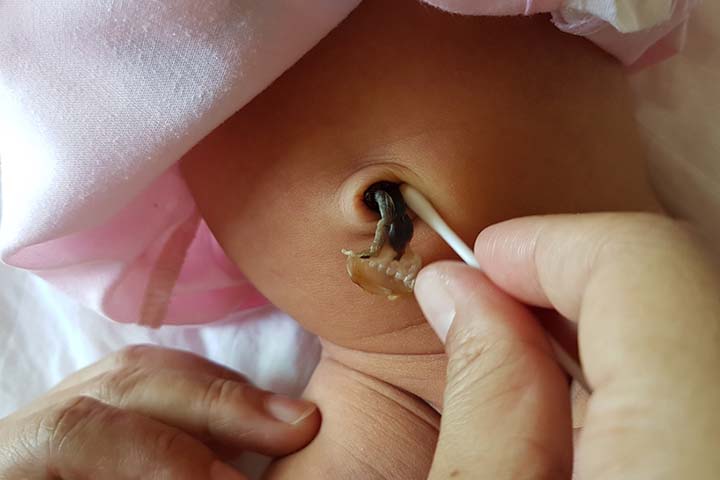Introduction:
Bringing a newborn into the world is a momentous occasion, and while you may be overjoyed, you might also face common concerns such as umbilical hernia. An umbilical hernia occurs when a baby’s abdominal muscles don’t fully close around the belly button, allowing a small part of the intestine or abdominal tissue to protrude. It’s a relatively common condition in newborns and infants and can often resolve on its own. In this article, we’ll discuss what umbilical hernia is, how to identify it, and effective ways to manage and treat it.

What is Umbilical Hernia?
An umbilical hernia presents as a soft swelling or bulge near the baby’s belly button or navel. It typically appears when the baby strains, cries, or is active and often disappears when they are calm or lying down. Umbilical hernias are usually painless and don’t cause discomfort to the baby.
Identifying Umbilical Hernia:
Umbilical hernias are usually straightforward to identify. Here are some key characteristics:
- A Soft Bulge: You’ll notice a soft, round, or oval-shaped bulge near the baby’s belly button.
- Change with Activity: The bulge may become more prominent when the baby is active or crying and recede when they are calm or lying down.
- Painless: Umbilical hernias typically do not cause pain or discomfort to the baby.
- No Discoloration: The skin over the hernia site should appear normal, without any redness or inflammation.
Treatment Options:

- Observation: Many umbilical hernias in newborns resolve on their own as the baby’s abdominal muscles strengthen and close naturally. Pediatricians often recommend a “watch and wait” approach for these cases. Regular check-ups are essential to monitor the hernia’s progress.
- Gentle Pressure: In some instances, a pediatrician may gently push the protruding tissue back into the abdominal cavity. This technique, called “reduction,” is performed by a medical professional and is typically painless for the baby.
- Surgery: If the hernia persists beyond the age of 2-4 years or if it becomes incarcerated (the tissue becomes stuck and cannot be pushed back), surgical intervention may be recommended. Umbilical hernia repair surgery is generally a minor procedure and is performed under anesthesia.
Tips for Parents:
- Observe and Monitor: Keep an eye on the hernia’s size and how it changes with your baby’s activity. Share any changes with your pediatrician during regular check-ups.
- Avoid Tight Clothing: Dress your baby in loose, comfortable clothing that doesn’t put excessive pressure on the hernia.
- Handle with Care: While changing diapers or bathing, be gentle around the hernia area to prevent any discomfort.
- Follow Medical Advice: Always follow your pediatrician’s advice regarding the treatment and management of your baby’s umbilical hernia.
Conclusion:

Umbilical hernias are relatively common in newborns and infants and often resolve on their own as the child grows. While they may cause initial concern for parents, most umbilical hernias do not require immediate treatment. Regular monitoring by a healthcare professional is crucial to ensure that the hernia progresses as expected. In the rare cases where surgical intervention is necessary, rest assured that it is generally a safe and straightforward procedure. Remember that every baby is unique, and consulting with your pediatrician is the best way to ensure your child’s health and well-being.



